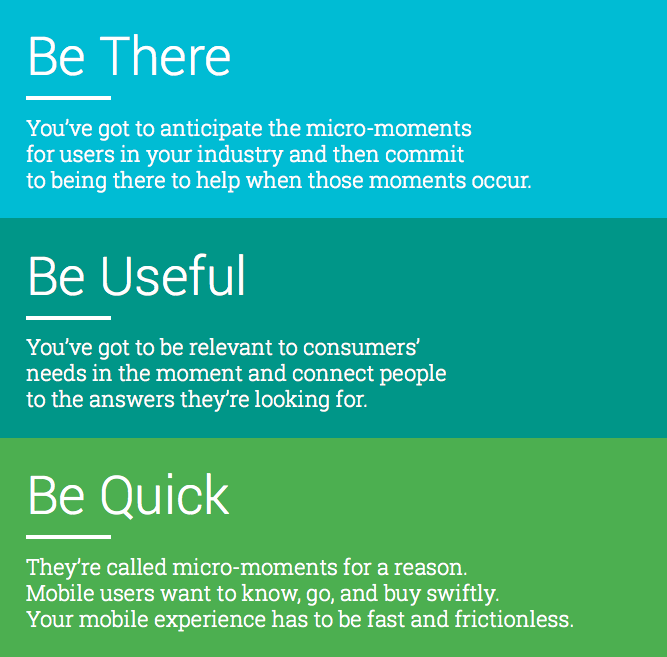Nine mobile trends to help you stand out in 2017 and beyond
The way we ask for information is changing. The way we optimise must change too.
The way we ask for information is changing. The way we optimise must change too.
The way we ask for information is changing. The way we optimise must change too.
Mobile use overtook desktop use in 2010. Mobile search on Google overtook desktop search only 18 months ago, in May 2015.
How can we keep up with this fast paced device to stay ahead of the game tomorrow?
A recent Yahoo study of 500,000 queries from Yahoo mobile search, performed by 50,000 unique users of the voice search interface over a six month period, found the following:
A few things we need to do immediately based on this study. The first is inspect our universal SERP result presence. The second is to write with rich natural language to increase your content quality.
The same study also thinks that engines need to experiment and factor in phonetic characteristics (e.g. searcher’s stress, speed and intonation for search personalisation) to really allow voice search to excel and become even more personalised.
Welcome to the future.
But to survive for the future of search our present foundations need to be solid. Let’s lay the foundation.
Considering you have covered the basics, such as implementing a responsive website, think of the various formats of content to get you closer to your audience.
The most obvious one is to think of your audiences’ learning styles and map these to your personas. Then match these with content formats.
Don’t stop here! Scale it up to survive and stand out.
Most mobile users who watch videos do so when little or no sound. Think learning styles and ensure your video can be watched in all ways – with or without sound. Think accessibility 100% of the time (more cool statistics here).
Once you know you have your personas completed, map these up to types of mobile motivations.

Message notifications do not compel us to reply as some messages are ignored – what exactly compels us to use mobiles?
We all turn to our mobiles for one of five search motivations:
Single motivations trigger most mobile searches but some motivations have a tendency to overlap (e.g. curiosity and knowledge-based searches).
This is true for both age and gender; but women tend to be more static compared to men who also often prefer to search outside, not surprising since men tend to smoke more than women.
Don’t forget to make your content marketing strategy responsive and scale it up with human consumption.
We process images much faster than text. It’s no surprise that images on SERPs receive a lot of initial attention. With this in mind test everything to get closer to your audience.

Track your URLs’ metrics. If you were to move that image on your blog post down two paragraphs, for instance, would it reduce or increase the bounce rate? What would happen to the average time spent on the blog post if you were to summarise the whole post in 2-3 sentences? What would happen if you moved your social media sharing icons?
Test, trial. Test, trial. Test, trial. WIN!
Do Schema. It is likely to be a ranking factor soon. Schema helps search engines, hence why a few different engines all signed up to it, to progress with semantics, specifically Resource Description Framework Schema abbreviated as RDF(S), and the tagging of information. Engines are far from semantic, however.
Most of our time is spent on a handful of apps, not the web. Get App optimised.
Are you doing AMP or Progressive Mobile Apps? Think about getting on the bandwagon.
Note: Our behaviours in this sense is still very immature. Most mobile links shared on mobile, for example, do not trigger any follow ups in the real world (e.g. “we decided to go to the bar afterwards”). Shop abandonment may increase as this is not considered the real world until we get our credit card out.
Weather information is popular on voice searches because it requires little interaction. But with the rise of AI, it may be that organic results will soon factor in time and weather whereby a search for “[location] activities” will take into account the weather conditions to present more indoor activities on a rainy day, for example.
Google’s Dave Byrne announced at Yext’s LocationWorld that local 3-pack results will soon display prices and allow the searcher to filter by star ratings within the 3-pack listing.
So there you go. One day voice search itself may determine what SERP is presented and when. Get ready by knowing your audience and their mobile motivations.